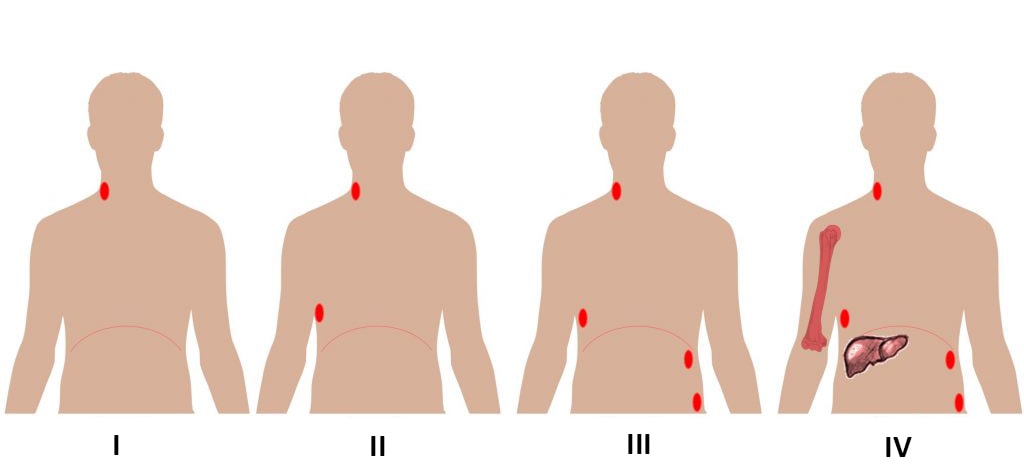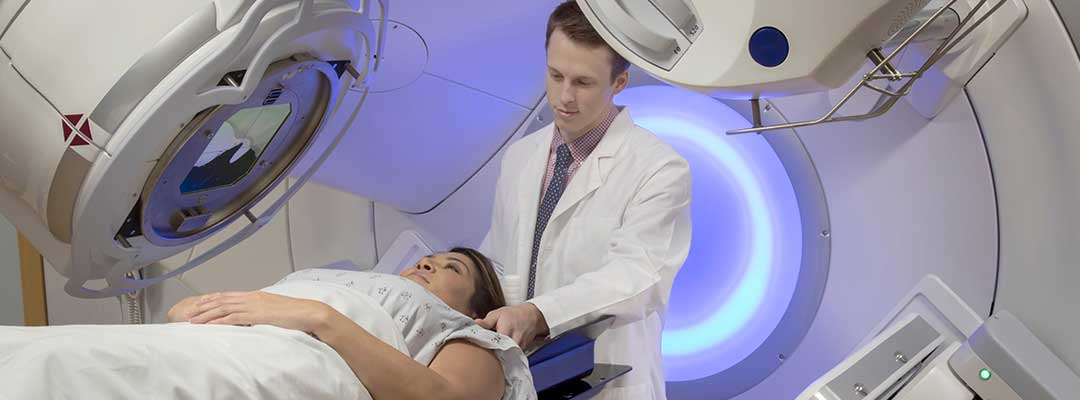Calls for Ukraine
Calls for Europe
Calls for USA

Lymphoma is a cancerous disease of the lymphatic system. Normally, the lymphatic system is involved in metabolism and protecting the body from harmful agents such as viruses, bacteria, and fungi. Lymphoma can affect organs of the lymphatic system as well as other tissues throughout the body. Lymphoma accounts for 4% of all forms of cancer and is the third most common cancer in children.
Doctors can’t tell you a definite cause of lymphoma.
In some cases, the chances of getting lymphoma are higher. Doctors combine this group of causes into what they call risk factors for lymphoma. They include:
How lymphoma develops
The development of lymphoma is associated with genetic abnormalities in the cells of the lymphatic system, the lymphocytes. Abnormal functioning of the cell’s genetic apparatus leads to mutations and the appearance of cells that do not resemble their parents. Atypical malignant cells are prone to increased consumption of the body’s energy resources, intensive division and longer life.
Symptoms of lymphoma are not specific and can occur with any other pathological condition or disease. The most common sign of lymphoma is a painless enlargement of the lymph nodes.
Lymphoma may be found as a swelling or lump in the neck. Also, lymphoma is often found in the axilla and groin area. Enlarged and swollen lymph nodes are due to an increased accumulation of atypical lymphocytes in the tissue.
Lymph nodes can enlarge not only in lymphoma, but also in any inflammatory process of the body. Other symptoms of lymphoma include:
Individual body characteristics and the extent of lymphoma can affect how lymphoma manifests itself.

Lymphoma treatment tactics depend on its subtype and stage. Complex diagnostics can determine the degree of spread and the type of pathological cells. Lymphoma is diagnosed under the supervision of an oncohematologist. This is a specialist who treats cancers of the blood and hematopoietic system.
When lymphoma is suspected, diagnosis begins with a consultation with a specialist. The oncohematologist will gather a detailed medical history, clarify complaints, and review your medical history. Based on this data, the doctor will make a diagnosis plan.
Laboratory blood tests
Blood tests play a supporting role in the diagnosis of lymphoma. The presence or absence of lymphoma cannot be determined on the basis of laboratory tests, but test results provide valuable information about the overall condition of the body. In lymphoma, there may be a decrease in the absolute number of blood cells: leukocytes, platelets and lymphocytes. This leads to spontaneous bleeding and frequent infections.
The patient takes blood tests throughout the treatment and rehabilitation period. This helps doctors monitor the effectiveness of therapy and prevent the development of complications.
Lymph node biopsy
Examining lymph node cells under a microscope is the main way to determine if a patient has lymphoma. The doctor performs a biopsy to obtain the cells. This is a method of examination, during which the doctor partially or completely removes an enlarged lymph node. In most cases, lymph nodes enlarge during infections. The doctor may prescribe antibiotics and monitor the size of the lymph node. If the node remains the same size or continues to grow, the doctor performs a biopsy.
If the affected lymph node is deep in the chest or abdominal cavity, removal takes place under general anesthesia. Foreign medical centers use ultrasound and CT scanning machines for navigation during the biopsy. This makes the results more reliable.
Bone marrow biopsy
If the diagnosis of lymphoma is confirmed, the doctor orders a biopsy and bone marrow aspiration to determine the extent to which the malignant cells have spread. Bone marrow and a piece of bone tissue are taken from the thigh bone with a thin needle. The procedure is minimally traumatic and is done under local anesthesia.
Lumbar puncture
During the test, specialists look for lymphoma cells in the cerebrospinal fluid. A lumbar puncture is indicated for some subtypes of lymphoma, if there are signs of brain and spinal cord involvement.
Radiological tests
Specialists use computed tomography, ultrasound, and magnetic resonance imaging machines to obtain highly accurate images of the body’s internal organs and tissues. Radiological diagnosis in lymphoma is necessary for several reasons:
Life expectancy in patients with lymphoma depends on several factors:
Doctors and scientists use five-year survival statistics to determine life expectancy. For non-Hodgkin’s type lymphoma, the five-year survival rate is:
Five-year survival rate for patients diagnosed with Hodgkin’s lymphoma:
Five-year survival rate is a relative statistic. Each patient has a different prognosis and course of lymphoma. This is influenced by individual characteristics and the treatment prescribed.

Depending on the growth and spread of malignant cells, the doctor determines the stage of lymphoma:
Stage 1 lymphoma.
Tumor cells affect only one group of lymph nodes in any area of the body and do not spread beyond it.
Stage 2 lymphoma
Two or more groups of lymph nodes are affected. The affected nodes are on one side of the diaphragm, above or below.
Stage 3 lymphoma
In stage 3 lymphoma, the affected lymph nodes are found on both sides of the diaphragm.
Stage 4 lymphoma
Stage 4 is characterized by involvement of the bone marrow or organs that are not part of the lymphatic system.
The main types of lymphoma
Types and subtypes of lymphoma are determined by the structure of the tumor cells, which are examined under a microscope. Doctors identify more than 60 different types and subtypes of lymphoma.
The main groups of lymphoma include:

After diagnosis, the doctor will make a treatment plan according to the patient’s current needs. Various factors influence the choice of treatment:
Active monitoring
Some types and subtypes of lymphoma have low cell malignancy and slow growth. In such cases, doctors resort to active surveillance tactics. The patient visits the hospital occasionally for outpatient diagnosis.
Active observation prevents unnecessary treatment, which can only harm the patient with slow-growing lymphoma. This avoids unwanted side effects in the future. Waiting tactics for lymphoma do not aggravate the patient’s overall condition and do not affect the effectiveness of future treatment.
Chemotherapy
Lymphoma refers to blood cancers. Atypical cancer cells can be treated with special drugs – cytostatics or chemotherapy. Chemotherapy stops the atypical cells from dividing or causes the lymphoma cells to die prematurely.
Lymphoma drugs act on cells that are dividing and have no effect on cells that are not dividing. Chemotherapy is prescribed in courses. Each course is followed by a rest phase. The length of the chemotherapy course and the rest period are determined individually.
Specialists combine several chemotherapy drugs to achieve the best treatment results. This is due to the different types of effect the drugs have on tumor cells. Chemotherapy is prescribed in the form of solutions for intravenous injection or in the form of tablets. When the brain and/or spinal cord is affected, chemotherapy drugs are injected into the cerebrospinal fluid through punctures in the spinal canal.
Radiation therapy for lymphoma
During a radiotherapy session, the cells are destroyed by radiation emanating from special machines – linear gas pedals. Radiotherapy may be the only method of treatment if a patient is diagnosed with slow-growing lymphoma at an early stage.
For other forms of lymphoma, radiation therapy is used in combination with chemotherapy.
Chemotherapy drugs destroy small foci of the tumor, while radiation therapy targets the main focus of cancer cell accumulation.
Advanced medical centers in Turkey, South Korea, Israel, Spain, and Germany are equipped with modern linear gas pedals: Varian TrueBeam, Clinac iX, RapidArc, and others. This allows doctors to target lymphoma cells with the utmost precision, without damaging healthy cells.
Radiation therapy can be used for palliative (supportive) care of patients in the later stages of lymphoma.
Bone marrow transplantation for lymphoma
If a patient’s bone marrow is damaged or destroyed, doctors perform a cell transplant, in which damaged cells are replaced with healthy bone marrow cells. Bone marrow transplantation (BMT) is necessary for patients who receive high-dose chemotherapy. This treatment is indicated for some malignant forms of lymphoma. BMT allows a combination of several powerful chemotherapy drugs to destroy large lymphoma foci.
Despite rest periods between courses of chemotherapy, bone marrow cells may have irreversible damage. In these cases, donor cells are used. Such transplantation is called allogeneic transplantation. Transplantation of one’s own bone marrow cells is called autologous.
BMT is performed on patients with Hodgkin’s lymphoma and some forms of non-Hodgkin’s lymphoma of high malignancy. Transplantation is not a primary treatment for lymphoma and may be used if there is a high risk of disease recurrence or if the main treatment is not effective.
How to do a bone marrow transplant for lymphoma
Before the transplantation, a donor is searched through a local or international database. It is important that the donor is the best possible match for the patient. This avoids a rejection reaction of the bone marrow transplant. Prior to transplantation, the patient may receive several courses of chemotherapy to kill residual tumor cells.
The bone marrow transplant procedure itself consists of intravenous injection of a special solution into the patient’s body, which is made from pre-collected and treated donor tissue.
Cost of bone marrow transplantation for lymphoma
Bone marrow autotransplantation:
Bone marrow transplantation from a related donor:
Bone marrow transplant from an unrelated donor:
CAR-T cell therapy
Normally, white blood cells, T-lymphocytes, have a protective function and destroy atypical cells in the body. Cancer cells can mimic the behavior of healthy cells by producing special proteins on their surface that are not perceived as hostile by T cells.
CAR-T therapy makes it possible to modify the behavior of blood T cells. For this purpose, the patient’s own blood cells are collected and sent to a special laboratory. Specialists modify the genetic material of the cell, after which T-lymphocytes begin to recognize specific proteins on the surface of lymphoma cells.
After successful modification, the cells are grown to the required number and injected back into the patient’s bloodstream.
Clinical trials
In some cases, treatments do not have the desired effect. This may be due to individual characteristics of the body or the type of lymphoma. Patients can apply to participate in clinical trials of new drugs that may have a positive therapeutic effect.
The final cost of lymphoma treatment depends on a number of factors:
Approximate cost of lymphoma diagnostics and treatment in foreign clinics:
Lymphoma is a group of diseases that combines Hodgkin’s lymphoma and non-Hodgkin’s lymphoma. Lymphosarcoma is another name for all non-Hodgkin’s lymphomas. Thus, lymphosarcoma is in the general class of malignant tumors of the hematopoietic system.
Hodgkin’s lymphoma (lymphogranulematosis) is a type of blood cancer that develops from B-lymphocytes. In lymphogranulematosis, a special kind of cell, Reed-Sternberg cells, can be seen under the microscope. These are large cells that have two nuclei and resemble the eyes of an owl. It is because of these cells that Hodgkin’s lymphoma can be distinguished from other lymphomas.
Hodgkin’s lymphoma can develop at any age, including childhood, and is more common in men.
The growth and development of lymphoma is largely determined by its type. Some lymphomas have aggressive and malignant growth within a few months. Slow-growing lymphomas can take years to develop or remain unchanged in size, allowing the tumor to be actively monitored without active treatment.
In the fourth stage of lymphoma, tumor cells spread beyond the lymphatic system. Doctors find lymphoma in the lungs, liver, and other organs and systems. If the tumor affects the spleen or thymus gland, stage four is not diagnosed, because these organs are part of the lymphatic system.
In skin lymphoma, atypical lymphocytes multiply uncontrollably and affect the skin. Skin lymphoma has the same mechanism of development as other types of lymphoma. Skin lymphoma can develop from T and B lymphocytes.
Lymphoma is a group of diseases that combines Hodgkin’s lymphoma and non-Hodgkin’s lymphoma. Lymphosarcoma is another name for all non-Hodgkin’s lymphomas. Thus, lymphosarcoma is in the general class of malignant tumors of the hematopoietic system.
Hodgkin’s lymphoma (lymphogranulematosis) is a type of blood cancer that develops from B-lymphocytes. In lymphogranulematosis, a special kind of cell, Reed-Sternberg cells, can be seen under the microscope. These are large cells that have two nuclei and resemble the eyes of an owl. It is because of these cells that Hodgkin’s lymphoma can be distinguished from other lymphomas.
Hodgkin’s lymphoma can develop at any age, including childhood, and is more common in men.
The growth and development of lymphoma is largely determined by its type. Some lymphomas have aggressive and malignant growth within a few months. Slow-growing lymphomas can take years to develop or remain unchanged in size, allowing the tumor to be actively monitored without active treatment.
In the fourth stage of lymphoma, tumor cells spread beyond the lymphatic system. Doctors find lymphoma in the lungs, liver, and other organs and systems. If the tumor affects the spleen or thymus gland, stage four is not diagnosed, because these organs are part of the lymphatic system.
In skin lymphoma, atypical lymphocytes multiply uncontrollably and affect the skin. Skin lymphoma has the same mechanism of development as other types of lymphoma. Skin lymphoma can develop from T and B lymphocytes.
Please rate the work of MedTour
